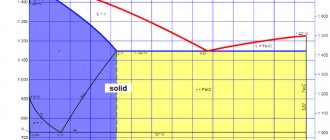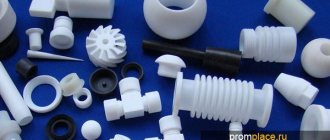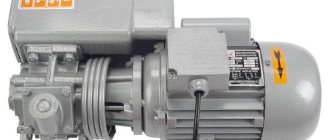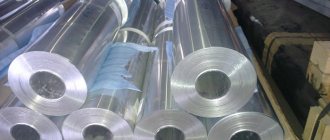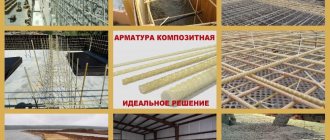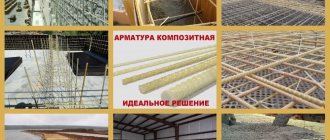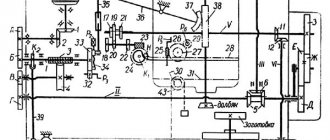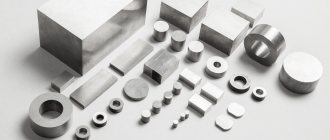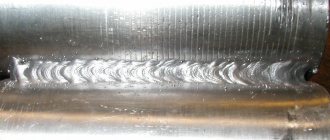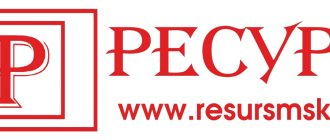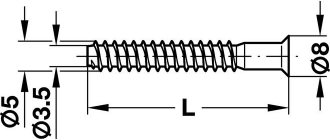What is
Cast iron is an iron-based alloy. Belongs to the group of ferrous metals.
Ferrous metals are iron, alloys based on it (steel, cast iron, ferroalloys), manganese. According to some classifications, chromium is included in the group.
In terms of composition, cast iron is a conglomerate of iron, carbon, plus other metals. The steel formula could contain the same basic components.
The difference between these alloys is the amount of carbon. If it is less than 2.14%, it is steel. More - cast iron.
Other components are alloys and impurities (sulfur, silicon, phosphorus, manganese).
Carbon in the structure of cast iron is represented by inclusions of graphite or cementite (iron carbide, formula - Fe3C ).
You can distinguish cast iron from steel visually. Steel is lighter and shiny, cast iron is dark matte.
Half-hearted
An intermediate material between the first two varieties is half-cast iron. The carbon it contains is presented in the form of graphite and carbide in approximately equal proportions. In addition, such an alloy may contain small amounts of lideburite (no more than 3%) and cementite (no more than 1%). The total carbon content of half cast iron ranges from 3.5 to 4.2%. This variety is used for the production of parts that are operated under conditions of constant friction. These include automobile brake pads, as well as rolls for grinding machines. To further increase wear resistance, all sorts of additives are added to the alloy.
Story
The documented history of cast iron starts from the 1st millennium BC:
- Smelting was mastered by the Chinese and their neighbors.
- From the 5th century BC, the period of decorative iron casting began.
- 600 years later, coins appeared in China.
The appearance of the alloy in Europe dates back to the 14th century, in Russia – two hundred years later. Interest increased due to the suitability of cast iron as a material for cannons and cannonballs.
Eglinton Tournament Bridge (completed c. 1845), North Ayrshire, Scotland, built of cast iron
Since the time of Queen Victoria, fireplaces have become the most popular product in the “civil segment” among the British.
Cast iron coal iron
The heyday of the cast iron industry in Russia dates back to the 18th century:
- Bridges and rails appeared.
- Cast iron pots were invented in the Urals - the number one cookware for the Russian stove. Later they were supplemented with frying pans.
- By the end of the century, Russia had become the world leader in the production of cast iron.
The original bridge across the Tey from the north (finished in 1878)
The openwork products of Kasli craftsmen have gained world fame.
The method of molding for casting artistic castings of complex shapes, invented by the Kasli people, is still in demand by machine builders today.
Application
1) Cast iron is indispensable in mechanical engineering. A large number of parts (pistons, gears, electric motors) are made from it. 2) Cast iron is also valuable in the metallurgical industry. It has excellent casting properties and is also not expensive. 2) Cast iron continues to be widely used to create sewer pipes and plumbing fixtures. It is used to make durable bathtubs, sinks and fittings. Some radiators purchased years ago still continue to serve their owners. 3) The alloy is also used for the production of tableware. Cast iron frying pans are especially popular. 4) Cast iron stoves are not only much cheaper than their analogues, but are also not subject to deformation when heated. 5) Decorative elements or artistic elements are also created from cast iron: openwork fences, gates and gratings.
Recently, due to the high cost of producing cast iron, its use has decreased significantly. To facilitate production, lighter alloys for manufacturing began to be used instead. This trend has been going on for several years now, and for many people, cast iron now seems like a relic of the past. But there are still sectors in which it is not losing ground and is still extremely necessary. Therefore, it is not possible to completely abandon the use of cast iron.
Receiving technology
Cast iron cast in the form of pigs
The source of raw materials for metallurgists is iron ores (rocks with a predominance of iron in the composition).
The ore is sent to processing plants, where part of the “empty” material is removed from the raw material.
The resulting material is transported to the metallurgical plant.
Here they are loaded into blast furnaces:
- Fuel is added - coke (a product of processing coal), limestone, briquetted coal dust.
- Melts at high temperatures.
- During the reduction process, iron with carbon embedded in its structure is obtained from oxides.
As a result of smelting, cast iron and slag are formed (a mixture of fuel ash, unused fluxes, and other products).
Ligatures are added if necessary. They determine the physical and chemical properties of the material.
Production is simple, but environmentally dirty.
Varieties
We have already found out what cast iron is and how it is obtained, now we will understand the classification of this material. Pipe and foundry cast iron is produced using the method described above.
Pig iron is used in steel production via the oxygen converter route. This type is characterized by a low content of silicon and manganese in the alloy. Foundry cast iron is used in the production of all kinds of products. It is divided into five types, each of which will be considered separately.
Advantages and disadvantages
At the household level, the main advantages of cast iron alloys are: non-toxicity, biocompatibility, hygiene, and heat resistance. Thanks to this, cast iron and other cookware are not destroyed by acid-base compounds (for example, when cooking borscht), are easy to clean, and remain warm for a long time.
For industrialists, other advantages come to the fore:
- A simple, economical way to obtain.
- Durability, preservation of consumer characteristics of products for decades.
- Possibility of producing a wide range.
Plus affordable prices for all products - from ingots to frying pans or a decorative bench.
Cast-iron pan
Disadvantages of the material:
- Fragility.
- Difficulty in welding.
- Vulnerability to corrosion.
- Heaviness of products.
Often, special conditions are required for transportation, assembly, and maintenance of products.
When welding, for example, the parts are heated in advance, the material and mode are selected. That is, they use gas installations, coated or carbon electrodes, and powdered wire.
Classification
Cast iron is classified on several grounds:
- According to the dimensions and shape of graphite inclusions. Layered, spheroidal, vermicular, flakes.
- By type of carbon. Graphite, cementite.
- According to production technology. Grey, white, reworked.
- Based on the presence of additives. Ordinary and alloyed. Alloyed are alloys of cast iron with metals (molybdenum, nickel, chromium, titanium, etc.). Alloys with such metals give products ductility, resistance to wear, destruction, and corrosion.
Microstructure of white cast iron
Product characteristics are established at the production stage.
Cast iron marking
In industry, types of cast iron are labeled as follows:
- pig iron - P1, P2;
- pig iron for castings (pipe casting) - PL1, PL2;
- pig iron - PF1, PF2, PF3;
- conversion high-quality cast iron - PVK1, PVK2, PVK3;
- cast iron with lamellar graphite - SCh (numbers after the letters “SCh” indicate the value of tensile strength in kgf/mm).
Anti-friction cast iron:
- anti-friction gray - ASF;
- anti-friction high-strength - AChV;
- anti-friction malleable - ABC;
- cast iron with nodular graphite for castings - HF (the numbers after the letters “HF” mean tensile strength in kgf/mm and relative elongation (%);
- alloyed cast iron with special properties - Ch.
High strength
This type of cast iron is obtained due to the formation of spherical graphite inclusions in the metal lattice. Because of this, the metal base of the crystal lattice weakens, and the alloy acquires improved mechanical properties. The formation of spherical graphite occurs due to the introduction of magnesium, yttrium, calcium and cerium into the material. High-strength cast iron is close in its parameters to high-carbon steel. It lends itself well to casting and can completely replace steel parts of mechanisms. Due to its high thermal conductivity, this material can be used for the manufacture of pipelines and heating devices.
Where is cast iron used?
Cast iron is used in two qualities: a basic component in steel smelting or a material for industrial products.
Cast iron stove - potbelly stove
The main area of application of the alloy is mechanical engineering.
Technology and product range are determined by the type of cast iron.
Cast iron staircase
White cast iron
Carbon cementite is formed due to instantaneous cooling. Recognized by the whitish color of the fracture, hardness, and fragility. The alloy is unsuitable for machining by cutting. It is used for solid wear-resistant casting (rolling rolls, parts of mill and crushing mechanisms) and as a source of malleable types of cast iron.
Microstructure of white cast iron at 100x magnification
Grey
The basis of the structure is layered graphite, which imparts a grayish tint. It can be machined, but its strength and ductility are low.
Advantages: good anti-friction, damping properties, mini-sensitivity to voltage batteries, fluidity, minimum defects during shrinkage.
It is used as a material for castings of complex configurations with wall thicknesses up to 5 cm.
It is used to make rolling mills, flywheels, columns, frames, and sewer and water supplies (manholes, pipes, fittings).
Cast iron manhole cover
Malleable
The result of heat treatment of white cast iron with flake graphite. This structure ensures strength, ductility, good machinability of castings, and the absence of internal stress.
Thanks to this, the alloy has found application as a material for parts and elements operating under conditions of shock and vibration: pedestals for massive equipment, supports for highways, railway bridges, diesel engine crankshafts.
The Severn Bridge - the world's first cast iron bridge
Special
Alloys with additional characteristics obtained by alloying, annealing and cooling using special technology.
Divided into:
- ferroalloys;
- corrosion-, wear-, heat-resistant;
- antifriction;
- with electromagnetic properties;
- decorative.
The composition of alloys and technology are regulated by standards.
High-strength grades become the mechanism of turbines, crankshafts, tractor and automobile engines, gears, and rolling rolls.
Anti-friction grades are used for bearings, fuel pump bushings, valves, and piston rings for cars.
Fences, columns, fountains, and small plastic items are forged from decorative ones.
Cast iron fence
Peredelny
A semi-finished product, a source for processing into steel or creating castings. The percentage of phosphorus, silicon, sulfur, manganese components in the alloy is regulated by the industry standard.
Depending on the purpose and percentage of silicon, pig iron for steelmaking, foundry production, phosphorous, and high-strength are distinguished.
The latter type of alloy contains graphite beads and magnesium. Used for the production of parts operating under extreme loads (mechanical and thermal) in aggressive environments.
Grey
This is the most common type of cast iron. It has found application in various areas of the national economy. In gray cast iron, carbon is present in the form of pearlite, graphite or ferrite-perlite. In such an alloy the carbon content is about 2.5%. Like cast iron, this material has high strength, so it is used in the production of parts that receive cyclic loads. Gray cast iron is used to make bushings, brackets, gears and housings for industrial equipment.
Thanks to graphite, gray cast iron reduces friction and improves the effect of lubricants. Therefore, parts made of gray cast iron are highly resistant to this type of wear. When operating in particularly aggressive environments, additional additives are introduced into the material to neutralize the negative impact. These include: molybdenum, nickel, chromium, boron, copper and antimony. These elements protect gray cast iron from corrosion. In addition, some of them increase the graphitization of free carbon in the alloy. Thanks to this, a protective barrier is created that prevents destructive elements from reaching the surface of the cast iron.
